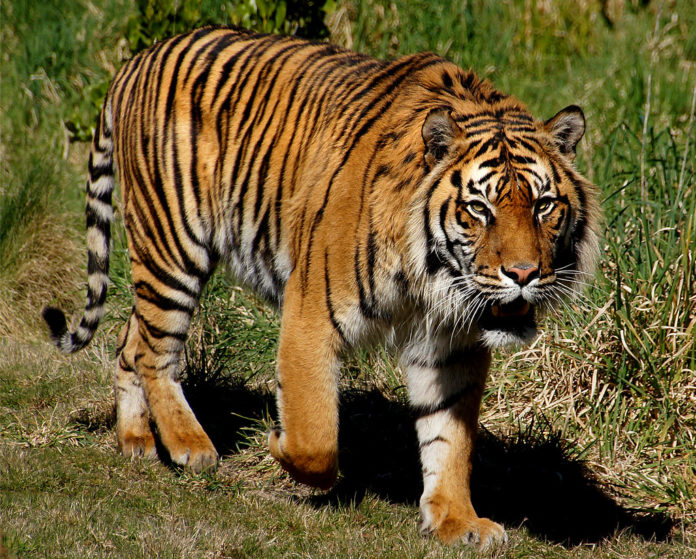New Delhi (NVI): India has achieved its target of doubling the number of tigers from 1411 in 2010 to 2967, two years before the committed date of 2022, Prime Minister Narendra Modi said today.
PM Modi was speaking after inaugurating the 13th Conference of Parties on Conservation of Migratory Species of Wild Animals at Gandhinagar through video conferencing.
While addressing a gathering, the PM called upon Tiger Range Countries present on the occasion to come together to strengthen tiger conservation through sharing of benchmarking practices.
While asserting that India is one of the most diverse countries of the world, he said, “With 2.4% of the world’s land area, India contributes about 8% of the known global biodiversity.”
The Prime Minister stressed that for ages, conservation of wildlife and habitats has been part of the cultural ethos of India, “which encourages compassion and co-existence”.
“Inspired by Gandhi ji, the ethos of non violence and protection of animals and nature have been suitably enshrined in the constitution of India and is reflected in several laws & legislations,” he said.
The Prime Minister also spoke of the increase in India’s forest cover, which currently stands at 21.67% of the total geographical area of the country.
He mentioned how India has been championing the cause of “climate action” through conservation, sustainable lifestyle and green development model.
In this context, he mentioned the push towards electric vehicles, smart cities, and conservation of water.
“India is one of the few countries whose actions are compliant with the Paris Agreement goal of keeping rise in temperature to below 2 degree celsius,” he said.
The Prime Minister also elaborated on some of India’s priority areas, while holding the presidency of this convention for the coming three years.
Noting that India is a part of the Central Asian Flyway for migratory birds, he said that with a view to conserve birds along the Central Asian Flyway and their habitats, India has prepared a ‘national action plan for conservation of migratory birds along the central asian flyway’.
“India would be happy to facilitate preparation of action plans for other countries in this regard. We are keen to take the conservation of migratory birds to a new paradigm with active cooperation of all the central asian flyway eange countries,” he said.
“India proposes to strengthen its association with the ASEAN and East Asia Summit countries,” he said.
“This would be in sync with the Indo Pacific Ocean Initiative (IPOI), wherein India will be playing a leadership role,” he added.
“India by 2020, will be launching its Marine Turtle Policy and Marine Stranding Management Policy,” he asserted.
“This will also address the pollution caused by microplastics,” he added.
“Single use plastics have been a challenge for environment protection and we in India have been on a mission mode to reduce its usage,” he said.
Mentioning that several protected areas in India share common boundaries with the protected areas of neighbouring countries, the Prime Minister said that cooperation in conservation of wildlife through establishment of ‘Trans boundary Protected Areas’, would lead to very positive outcomes.
Reiterating the union government’s commitment to the path of sustainable development, he mentioned the release of the linear infrastructure policy guidelines to tailor development in ecologically fragile areas.
He also explained how, in the spirit of “Sabka Saath, Sabka Vikaas, Sabka Vishwaas”, millions of people living in vicinity of forest area in the country have now been integrated in the form of Joint Forestry Management Committees and Eco Development Committees and associated with the protection of forest and wildlife.








